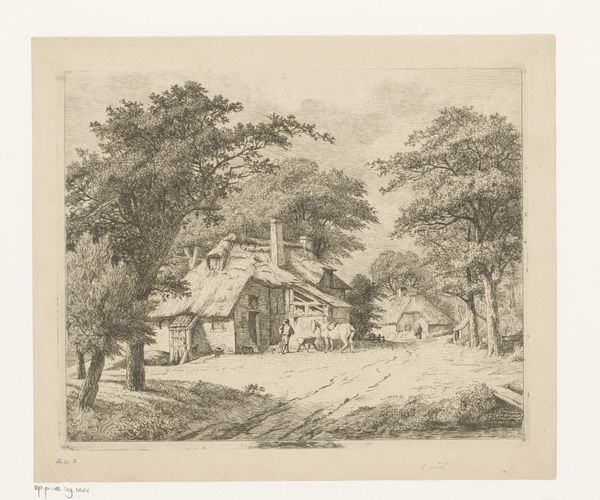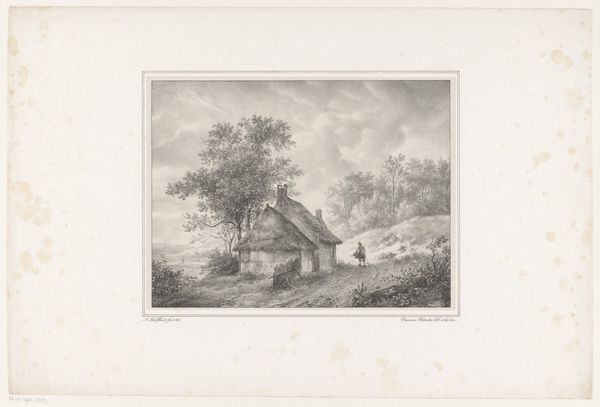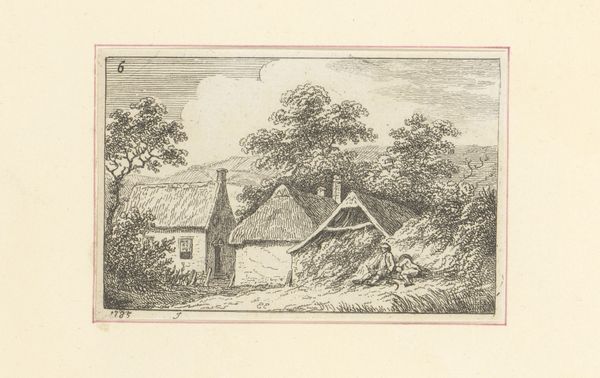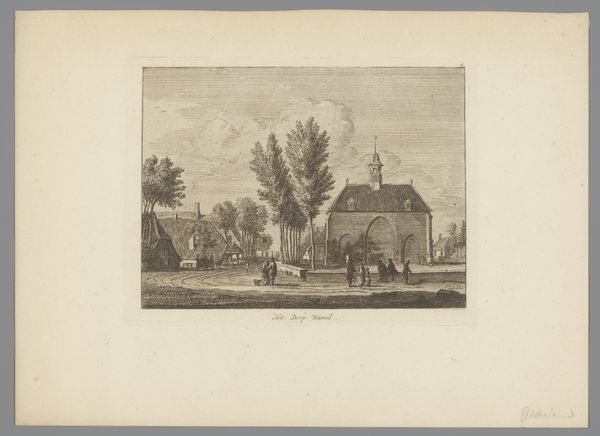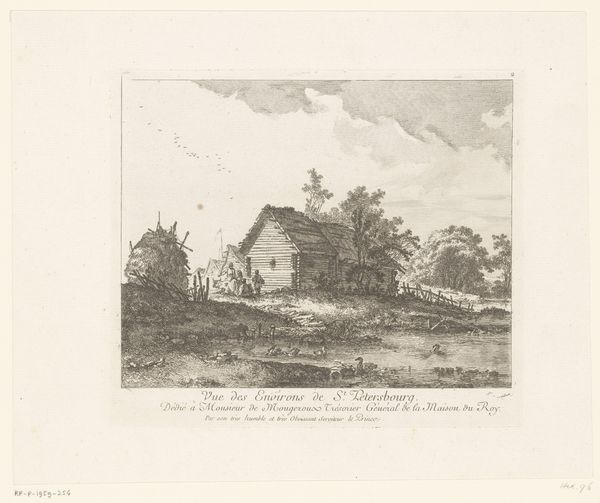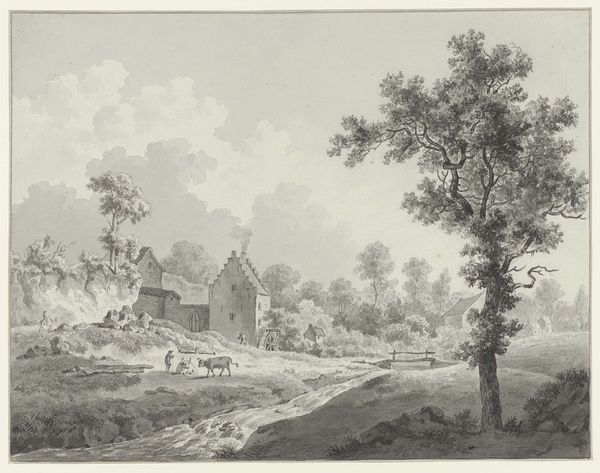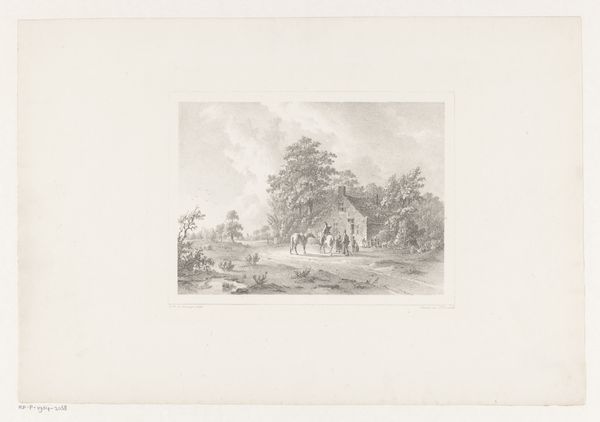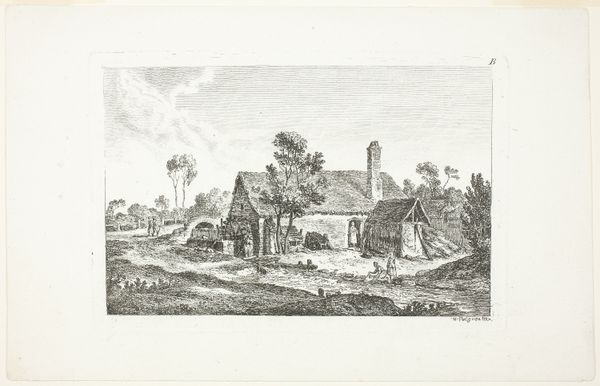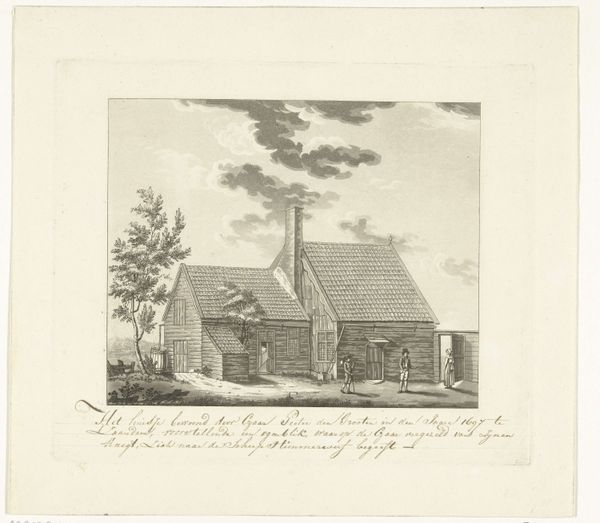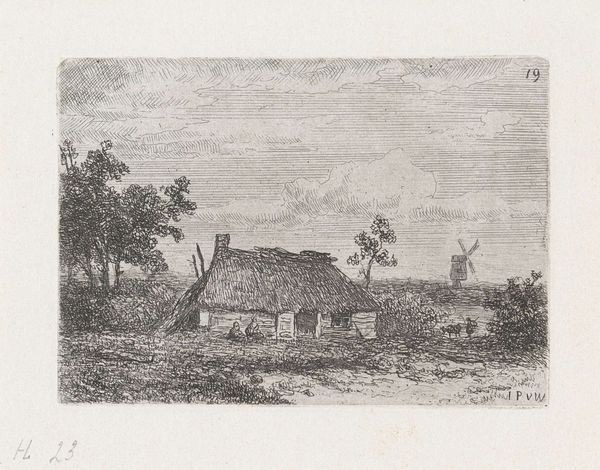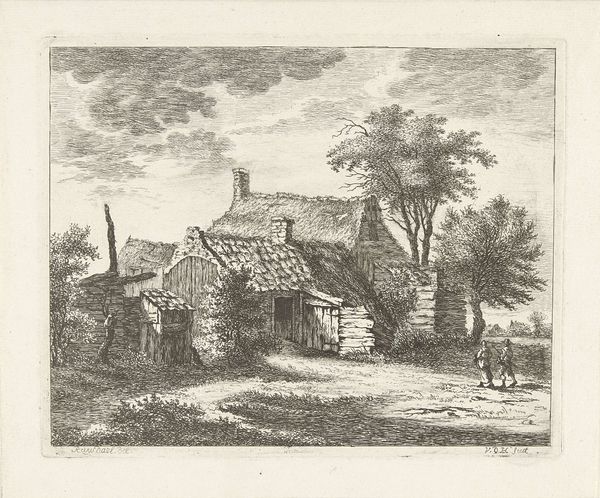
print, engraving
#
16_19th-century
# print
#
landscape
#
engraving
#
realism
Dimensions: height 292 mm, width 375 mm
Copyright: Rijks Museum: Open Domain
Hendrik-Dirk Kruseman Van Elten created this print of a church in the 19th century, using etching techniques. This method involves using acid to cut into a metal plate, traditionally copper or zinc, to create an image. The plate is covered with a waxy substance, and the design is scratched into this layer, exposing the metal. The plate is then immersed in acid, which bites into the exposed lines. What makes this print interesting is how it highlights the labor and skill involved in traditional printmaking. Etching requires a deep understanding of materials and processes. The quality of the lines, the depth of the bite, and the overall tonality of the print all depend on the artist's control over the materials and their skillful application. This print bridges the gap between fine art and craft, reminding us of the value of skilled handwork in art production. By focusing on these aspects, we can gain a deeper appreciation for the artistry.
Comments
No comments
Be the first to comment and join the conversation on the ultimate creative platform.
